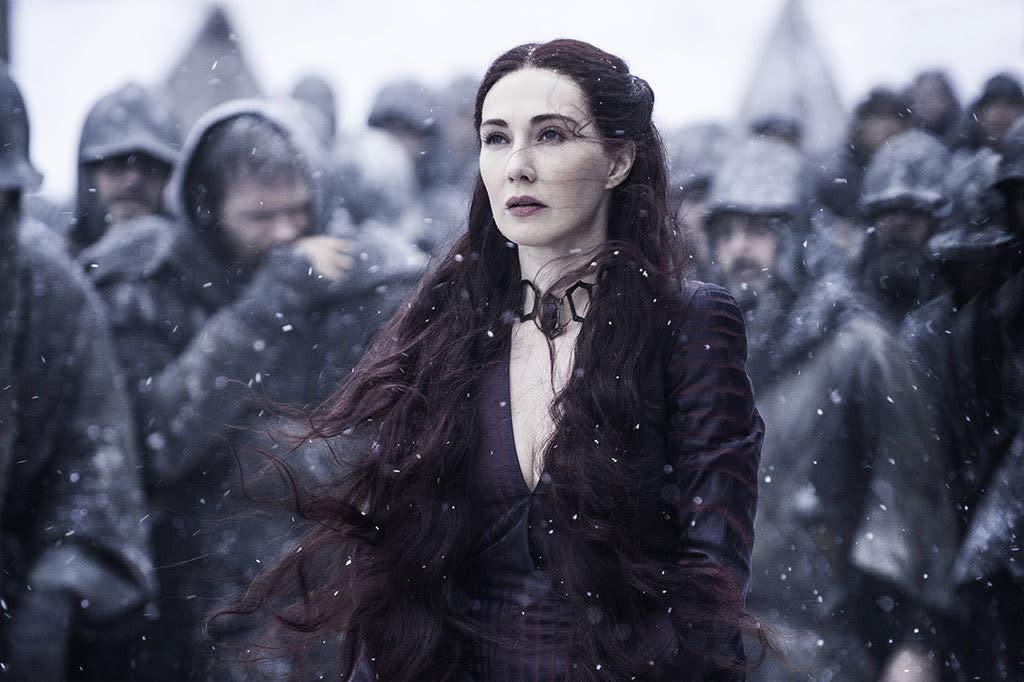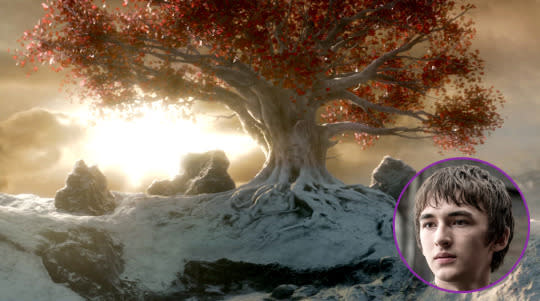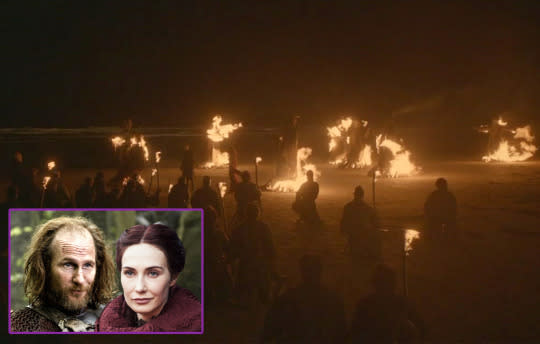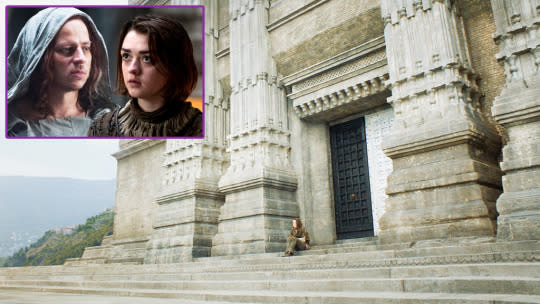A Brief Guide to the Religions of 'Game of Thrones'

Our long wait is (almost) over. A year after the Season 5 finale that launched a thousand fan theories, Game of Thrones is preparing to enter new territory in its sixth season, which debuts Sunday, April 24 on HBO. For the first time in its history, the series will venture completely off book, as the writers have lapped the release of author George R.R. Martin’s final two novels. So now, both readers and newbies will be on the same proverbial page when we return to Westeros, Dorne, and points beyond.
As viewers count down the days to Game of Thrones’ return, we here at Yahoo TV are launching our official countdown: #GoTIsComing. Check back here every day over the next month as we explore all of our favorite (and a few of our least favorite) people, places, and things about television’s most addictive show. From Direwolves and Dragons to the shows most hideous deaths and imperiled characters, we’re going to indulge or GoT obsession with the same fervor that Cersei imbibes alcohol. So raise a glass and toast the impending arrival of a long, cruel, and bloody Westerosi winter.
—–
As loyal as the characters of Game of Thrones are to their houses, so too are many to their religions. A prime example is Melisandre, a priestess of the Lord of Light, who burns people alive on the stake as offerings to her god. There’s the High Sparrow, who leads an ultra-pious, fanatic faction of the Faith of Seven, the dominant religion in Westeros.
Religions and beliefs look to play major roles in the upcoming sixth season of Game of Thrones. Will Melisandre use her magic to resurrect Jon Snow? Will the High Sparrow continue to hold dominion over King’s Landing against the Lannisters? Season 6 sees the return of Bran Stark, whose abilities may come from the Old Gods of the Forest.
Here’s a rundown of the various religions in the world of Game of Thrones, and which characters practice them:
WESTEROS
The Old Gods of the Forest

The ancient Children of the Forest, and then later the First Men, believed that spirits inhabited nature — the trees, the rivers, the stones. The followers of the Old Gods were mostly wiped out with the introduction of the Faith of the Seven (see below), but it was still practiced in the North, as well as by the Wildlings. Ned Stark kept his faith, and his son, Bran, displays the magical abilities associated with it — warging and greensight (prophetic dreaming).
The Faith of the Seven

Westeros was conquered by people from the East, called Andals, who brought their belief in a god of seven faces, each representing a different aspect of life. For example, the Father represented justice and judgement, while the Mother stood for fertility and peace. Major Houses in the south of Westeros retained a septa, while the High Septon led the entire faith. In Season 5, the High Sparrow achieved that position when his cult-like faction gained multitudes of followers. The Sparrows believe that nobles and peasants are equal in the eyes of the gods, and wish to purge society of sinful excesses.
The Drowned God

The religion practiced on the Iron Islands justifies their culture of raiding, pillaging, and killing. A boy is not considered a man until he has killed his first enemy. Their beliefs emphasize men, so it is surprising that Yara Greyjoy has risen to command her own ship and soldiers.
ESSOS
The Lord of Light

This religion is widespread among the cities in Essos. As the priestess Melisandre explains, there are two gods: R’hilor, the god of fire and light and love and joy, and a god of darkness, evil, and fear. The rituals in this faith involves fire — thus, Melisandre burns false idols and even people as offerings. She burns Stannis Baratheon’s daughter, Shireen, in a sacrifice of king’s blood, but his army is defeated by the Boltons, anyway. Priests can also revive dead people, as we saw Thoros of Myr do to Beric Dondarrion in Season 3. There is a mythical figure in the lore of the Lord of the Light — the Prince That Was Promised, who would be reborn to fight the coming darkness. Perhaps Jon Snow is a possible candidate?
The Many-Faced God

The believers of this faith worship only Death, believing it to be the one link among all the religions across the lands. It is practiced by the Faceless Men, a cult of assassins that Arya Stark is trying to join. Their temple is the House of Black and White. The Faceless Men believe death is a gift, and they are simply helping people achieve it. To that end, they consider themselves “no one,” completely devoid of personal desires.
The Great Stallion

The Dothraki believe in this deity above all others. The stars make up the Great Stallion’s khalasar, so when the Dothraki die, their bodies are burned so that their spirits may rise up to the heavens. There is a prophesy that a child, “The Stallion Who Mounts the World,” will be born to unite all of the Dothraki. Daenerys Targaryen believed it to be her unborn son, but he died in the womb.
Other Religions
Numerous other faiths are mentioned in the books as being practiced in the cities of Essos, like the Moonsingers of Braavos. It’s possible some of them may come up in later seasons.
Read more of our #GoTIsComing coverage:
‘Game of Thrones’ Peril-o-Meter: Who Dies Next?
‘Game of Thrones’: 11 Classic Tyrion Lannister Insults For Every Occasion
‘Game of Thrones’: Everything You Need to Know About the Direwolves of House Stark
‘Game of Thrones’: 10 Characters Who Were Recast
‘Game of Thrones’: 10 Best Dragon Moments
‘Game of Thrones’: 10 Characters We Want to Come Back to Life
‘Game of Thrones’: 10 Characters Who Really Need to Die
‘Game of Thrones’: Bran Stark Is Back (and He’s All Grown Up)
Quiz: ‘Game of Thrones or Donald Trump?
‘Game of Thrones’: Who Is on Arya’s Kill List?
‘Game of Thrones’: A Traveler’s Guide to Dothraki — How to Speak So You Don’t Get Your Head Cut Off


